Which drink do you relish most? At the end of the day, do you like drinking a nice beer? Do you like drinking a glass of wine during dinner? Perhaps you don’t enjoy both of them and continue to drink tea and coffee?
No matter what your preferences may be, there is most likely a very good reason of which you are yet unaware – and this is what you’ll find out in this summary. They explain to you the creation and improvement of several of the most preferred drinks, ranging from rum to Coca-Cola, and the way they are drunk,. Not only will you witness the transformation these beverages underwent with time, but you’ll learn about the way the beverages altered the progression of human history as well.
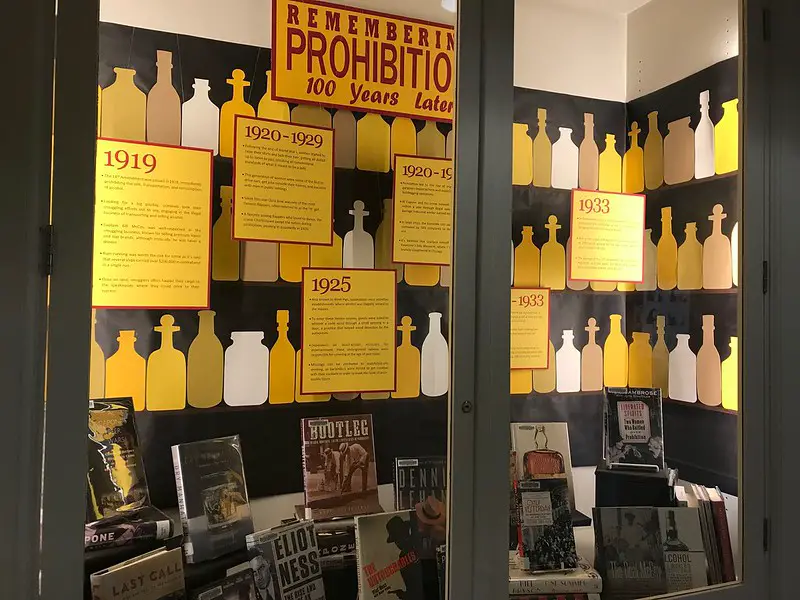
Chapter 1 – The advent of beer helped the advance of settled civilizations.
Since its first creation, many relish a glass of beer, however, have you thought about the creator of beer before? In reality, beer wasn’t an invention – beer was already present but people discovered it.
The roots of beer go back to the times when the Ice Age ended, roughly 10,000 BC when inhabitants in the region called the Fertile Crescent – which today constitutes the Middle East and Egypt – were cultivating wild cereal grains profusely.
Shortly after, people realized that if they put grains in water, their starch turned into malt. When people prepared gruel using this malted grain and had it ferment for several days, gruel becomes a drunk-making and somewhat fizzy beverage. Inhabitants of that region relished their flavor and how it had people feel; thus they began manufacturing more and more beer.
Wanting to manufacture more beer, people were urged to settle so they started settling down and, ultimately, cultivating the land.
Back then, people lived in hunter-gatherer societies; therefore people were just able to benefit from particular plots of land for brief durations and food storage wasn’t possible. However, the more they wanted to manufacture such grain-based foods and drinks as beer and bread, the more they started searching for a consistent supply of grain.
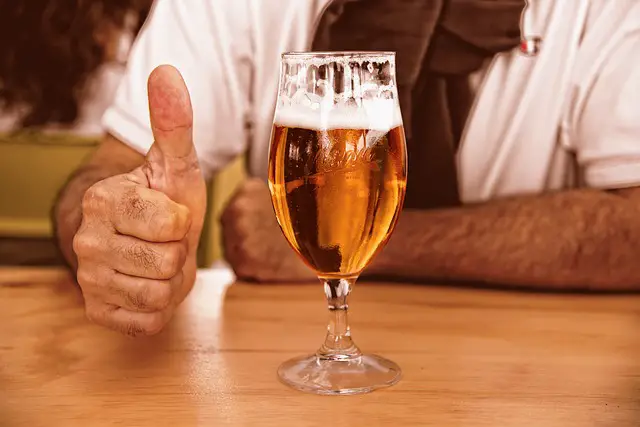
As a result, they were pushed to find out that when they collected cereal grains in storages, it was possible to use them for a few months, or, in fact, years. When they realized the advantages of storing grains, people understood they should dwell not far from grain supplies.
With the increase in demand for grain, people were this time pushed toward developing agriculture. People started throwing seeds on purpose and grow them as the dependency of their communities on grain-based products, such as beer, increased.
So, the beer started constituting a more prominent role in everyday life with the growth of these first settlements into civilizations. Beer represented a civilized life and giving people beer was seen as a courteous action. There had been religious and state ceremonies where beer was used.
Furthermore, beer is referred to as the spirit of the “civilized man” in the Epic of Gilgamesh that was carved on clay tablets in Mesopotamia and broadly considered as the first great literary product in the history of humankind.
Chapter 2 – As for the wine, it had a significant place for our forebearers.
Wine is a drink that many people can buy today and regardless of their social class, people like it. However, this has been so since very recently.
At the time of the ancient people, the wine was produced in small numbers, and carrying it from one place to another was very costly; thus people from higher upper caste could relish it. For example, for the Assyrian people, the wined showed the prestige of a person. In 870 BC, King Ashurnasirpal of the Assyrians declared the wine to be used as the drink at a huge feast he had it thrown for the Empire’s aristocracy since the wine was a drink brought into the Assyrian lands from remote countries and it demonstrated how powerful he was.
Wine made its way into the Ancient Greek social caste as well. The Greeks figured out a way to make wine somewhat less costly; as a result, the intellectual elite started drinking wine. The wine was found in plentitude at symposiums and soon became a part of gatherings and occasions about poetry, art, or other intellectual pursuits.
The ancient Greeks did not see beer as equivalent to wine. According to them, beer was something very basic and was drunken among “barbarians” in other countries.

The Greeks boastfully spread their wine and wine culture all across the Mediterranean, which was helpful to their spreading power across the globe. Other cultures started to admire other features of their culture, such as the ornate jars and amphorae that the Greeks used for the storage of wine.
The wine had the same prestigious status in Ancient Rome as well. After being triumphant against Greece in acquiring the preponderance in the region in around 200 BC, the Romans brought Greek grapevines into Italy, changing the commercial focus of the wine from Greece to Italy.
Both affluent aristocracy and slaves relished wine; thus, it was the sort of wine that was determinant in someone’s status. The most excellent wines, naturally, were secured for the aristocracy. Falernian, whose earliest production was made in Campania, retains its status as being one of the world’s best wines.
Chapter 3 – Alcoholic drinks reached other places from the Middle East and Europe via commerce and the creation of distillation.
The technology used in alcoholic spirit production went on to further develop for years and a new breakthrough was made when people who lived in the Arabian hegemony invented the distillation process. Though the novel alcoholic drinks manufactured there didn’t attract much attention due to religious grounds, they shorty later made their way into Europe.
Initially, Europeans thought that distilled wine could cure illnesses. An Italian alchemist, Michael Salernus, was the earliest person to carry out tests with the distillation method after learning about how to distill wine and salt in Arab manuscripts that remained from the 12th century. While the spirit he made wasn’t very savory, people shortly later started seeing it as a remedy for numerous diseases, from heart diseases to paralysis.
Thanks to the part played by the popularity of alcoholic drinks, the European influence spread across the globe. The reason was that they had to get to more sugar in order to manufacture more rum and as a consequence, Europeans kept expanding their states.
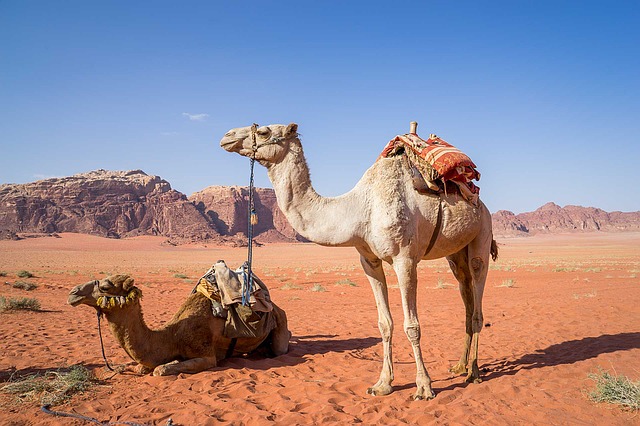
States from the Continent established numerous sugar plantations on the Caribbeans when they colonized the islands there. To illustrate, when settlers from Great Britain took with them sugarcane and harvesting tools to Barbados around the beginning of the 17th century, sugar came to be the most significant agricultural product in Barbados.
The significance of sugar and rum on the Caribbean islands was such that rum was used as a kind of currency! Sometimes, people even utilized rum to purchase slaves.
In the following years, distilled alcoholic drinks, such as rum, continued deeply affecting the progression of human history. Rum had an important role in the American war for independence, with the approval of the Molasses Act in 1733. The act taxed molasses that were utilized to produce rum and brought into the American colonies from lands not under the autonomy of Great Britain.
American colonists didn’t care about the act and went on to illegally import French molasses, whose quality was better. This first and apparent disobedience to British authority ultimately expanded to other goods, such as tea, and peaked in the American Revolutionary War.
Chapter 4 – Coffee turned into the preferred beverage among the intellectual elite everywhere in Europe.
In the Middle Ages, another significant beverage was invented: coffee. Though its early popularity was in the lands under the Arab hegemony, people wanted to have more coffee until the 17th century everywhere in Europe as well.
Prior to the increase in the popularity of coffee, people in Europe would consume beer and wine. Since many of drinking waters were contaminated, consuming weak beer or wine had a lower health risk.
On the other hand, drinking coffee didn’t pose any risks since coffee was prepared with boiling water. Shortly later, people who did not want to be drunk every day like scientists, merchants, clerks, and other intellectuals started preferring coffee. Furthermore, coffee boosted their energy and they could come to themselves quicker in the morning.
With time, coffeehouses started to thrive and take the place of taverns as the meeting points of academic and political discussion, and the earliest English coffeehouses were built around the 1650s. In contrast with taverns, there was enough light in coffeehouses and their furniture was better. They drew wealthy customers such as merchants, academics, and political thinkers, each of whom was happy to be in an intellectual atmosphere less depressing than a tavern.

So, coffeehouses shortly later turned into the centers of political discussion. To illustrate, people who wanted the return of the expatriated Charles II convened in coffeehouses to talk about his re-coronation for the kingship in 1660. The discussions and alliances forged in coffeehouses had an essential function in the revival of the kingship and the collapse of Oliver Cromwell’s rule.
King Charles II was dubious of coffeehouses, even if coffeehouses contributed to his successful re-coronation when he was no longer an exile. The flow of free speech in coffeehouses was worrying him and he tried to close them all.
Coffeehouses expanded to other places in Europe as well, especially Paris and Amsterdam. The places let people come together and learn the freshest news and gossip from each other – or began to make plans about revolutions! Actually, discussions and fiery conversations in the coffeehouses of Paris played a very important role in the French Revolution, which made some people state the success of the French Revolution was largely thanks to coffeehouses.
Chapter 5 – After being an important element of Chinese culture for so long, tea became widespread in Europe after the British took up the habit of drinking tea.
Many people know about tea-drinking in the English culture – however, they weren’t the earliest people to bring it into Europe. Tea arrived in Europe in the 1600s via commercial ships from China.
For a very long time, China didn’t want to get into commercial activities with Europe as Chinese traders believed there was no need for European commodities. However, this view underwent a transformation in the 1550s after they started to look for more silver and gold. Before long, China established a commercial relationship with Portugal. They exported silk and porcelain there and then started commercial activities with other European states.
The earliest nation to import tea was the Dutch. Tea was seen as something very novel back then. People viewed it as a luxurious good since it costed a lot more than coffee did, and people utilized tea in medicine.
But, the popularity of tee soon greatly increased in the UK. During the early years of the 1600s, just around six tons of tea were imported annually. During the last years of the 1600s, this number had reached 11,000 tons – not to mention the fact that there were great amounts of tea illegally brought into the country. Were we to add that smuggled tea, it would almost add up to 22,000 tons of tea!
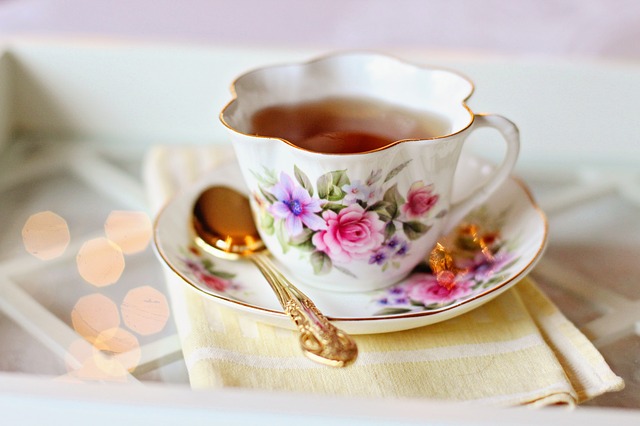
Then what is the reason for the popularity of tea among the British? Social reasons played a role in it; the royalty and aristocracy regarded tea as fashionable. With tea costing less money, people form under caste were able to take up the habit of drinking tea as well, so that they would look more sophisticated.
Tea houses and tea gardens quickly became widespread all across the nation. Women particularly frequented these places since women were allowed to purchase tea over the counter, while many coffeehouses would ban women from even setting their foot inside, let alone buying a cup of coffee.
However, this was just the onset of tea’s journey. The tea sector was soon to grow into a global power that would expand British rule across the globe.
Chapter 6 – The amazing figures of tea consumption in Great Britain have affected the Industrial Revolution and the balance of power in the world.
When we came to the 1700s, the popularity of coffee was in decline against tea in manufacture-related workplaces, such as factories with maintenance in the promotion of tea by the British Empire. So, the rise of tea happened at the same time – and maybe even ignited – as the Industrial Revolution.
In the same fashion as coffee, tea assisted workers to remain awake. However, there were other good signs of tea: waterborne sicknesses declined due to tea’s antibacterial features. People who were working in the factories of the empire were able to sleep in places full of people without being as exposed to sicknesses as they used to be. As a result, people who could become part of the workforce increased, and the more people there were to work, the factories were constructed.
Mothers with new-born babies could feed their babies with healthier milk because of tea, which reduced the death percentage of infants and further increased the size of the working-class population.
The tea was helpful in pushing industrial growth. It slowly constituted a status symbol, a crucial component of life for everyone regardless of their class, and British companies looked for new ways to satisfy the growing demand by figuring out novel methods to increase the quantity of tea. For example, The Wedgwood Company was the first company of its time to undertake tea mass-production.
In the same years, the East India Company turned into one of the most influential corporations in the world thanks to tea. The company’s mission was to provide tea to the empire and made even more profit than that of the empire itself!
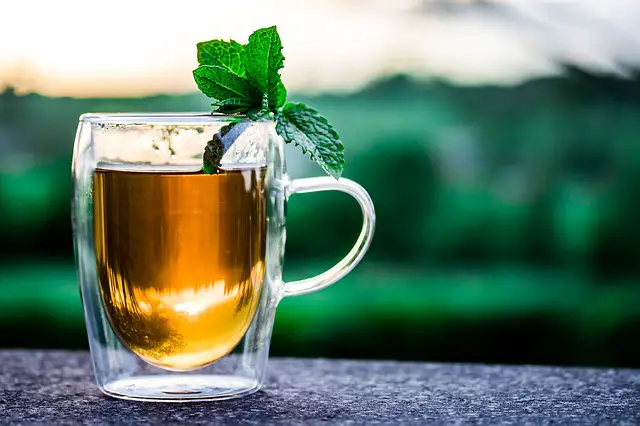
Of course, they got lots of political power as a result – so much power that they could even arrange tax laws. To illustrate, the Tea Act of 1773 permitted the East India Company to make tea sales to the American colonies without paying any taxes, compelling local traders to cover the import fees, and inflating prices for American buyers.
The following protests and boycotts peaked in the notorious Boston Tea Party. The tea tax was among a group of unjust tax laws forced on the Americans, which ultimately pushed them to wage war for their sovereignty.
Chapter 7 – Soda rose to prominence in the USA, and Coca-Cola shortly after became the market leader.
Roughly a hundred years later, one other pioneering beverage came to prominence and it happened in America this time: soda.
Scientist and clergyman Joseph Priestley of English origin was the earliest person to create carbonized soda following his exploration of the process of liquefication of gas.
People first applied Priestley’s carbonated beverage in medicine, since it resembled natural spring water. In America, though, people began consuming it for its flavor.
Soda quickly began to be popularly seen as a refreshing beverage, and more and more people started drinking it with the advent of the bottling process, improved in 1805 by the professor of chemistry Benjamin Silliman at Yale. And in 1909, a bottled soda salesman, Joseph Hawkins, came up the way to utilize fountains to distribute soda directly to consumers.
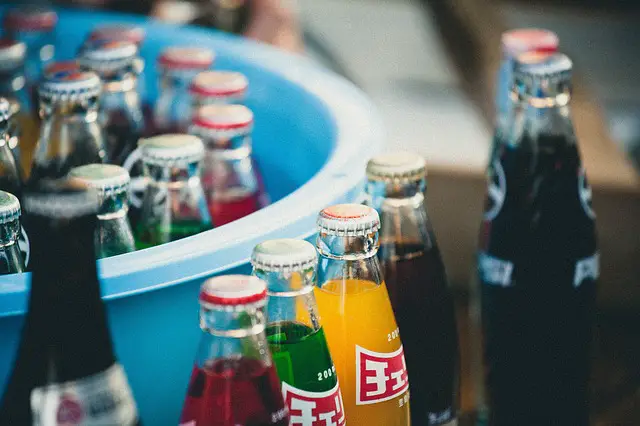
People in the US enhanced the savor of soda as well by putting syrups produced from fruits into the beverage. One person quickly created the most renowned soda among all sodas: Coca-Cola.
John Pemberton, a pharmacist who lived in the state of Georgia, created Coca-Cola by carrying out tests with coca, an ingredient Pemberton had seen in medical journals. He invented a beverage known as French Wine Coca by steeping the blend with wine; however, he started manufacturing an alcohol-free kind of it when the support for Prohibition movement increased. Ultimately, he invented a beverage now consumed everywhere on Earth.
Though Pemberton first promoted Coca-Cola as a tonic, it soon began to be consumed widespread as a refreshment, mostly as a result of his sharp marketing talents.
Actually, Pemberton gave the name “Coca-Cola” since he was aware that using two C’s would appear nice on advertisements. Pemberton wanted Coca-Cola to spread all across the globe; free samples, signs, and banners on soda fountains soon boosted the popularity among people of his sweet, fizzy drink
His method turned out to be a huge achievement: in 1887, the sales figures of Coca-Cola syrup leaped to 200 gallons per month and this was only in Atlanta. Within only eight years, yearly sales surpassed 76,000 gallons.
Chapter 8 – Coca-Cola began to be a worldwide product after the United States decided not to follow an isolationist policy anymore.
Today, Coca-Cola is a big global company, however, it’s difficult to conceive a product as much American as its products. Then what was behind the success in the spread of Coca-Cola everywhere in the world?
Coca-Cola started its worldwide journey after America decided not to follow an isolationist policy anymore. Before WW II, the Coca-Cola corporation was no different than the American government: it didn’t care about international expansion.
In the aftermath of the Pearl Harbor attack, though, the US armies were sent out everywhere in the world – and Coca-Cola accompanied the soldiers. People in the army started to link Coca-Cola to patriotism and American nationality. The brand recognized the great marketing chance and announced that “each soldier can obtain a bottle of Coca-Cola for the price of five cents, no matter where he purchases it.”
Coca-Cola started constructing bottling factories abroad to fulfill the increasing demands of the military personnel, especially in strategic areas, such as North Africa. These factories were later given to people of these foreign countries when the war came to an end, and the beverage achieved worldwide fame.
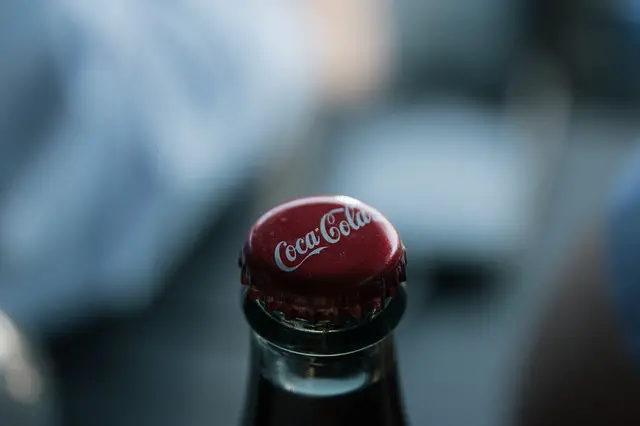
During the times following the war, groups who stood against the US associated the beverage with something highly different. Communists detested the product during the Cold War, regarding it as the representation of US capitalism and imperialism. Communists in France went as far as to have it outlawed, blaming that the product was toxic.
Soviet General Georgy Zhukov loved Coca-Cola; however, he was cautious as he didn’t want his name to be ascribed to something as American as Coca-Cola. Therefore, he asked whether the brand could produce it clear; thus, it would be similar to vodka!
Coca-Cola also affected Middle Eastern politics. Back in the 1960s, Israel started to think that Coca-Cola didn’t sell its products in Israel in order not to hurt the Arab market, which had greater potential compared to that of Israel. Groups that support Israel started thinking about boycott all over the USA; as a result, the brand decided to give license to a bottling franchise in Tel Aviv. Therefore, as a result, this decision inflamed an Arab boycott, which continued until the 1980s.
A History of the World in 6 Glasses by Tom Standage Book Review
For many thousands of years, water was the sole beverage that people could drink. However, this situation entirely transformed over the last 10,000 years. Multiple drinks have begun to be consumed all around the world, both because of their flavor and societal transformations. Huge international industries today center around beer, wine, spirits, coffee, tea, and Coca-Cola – and these six popular beverages will go on to influence our lives in the future, too.
